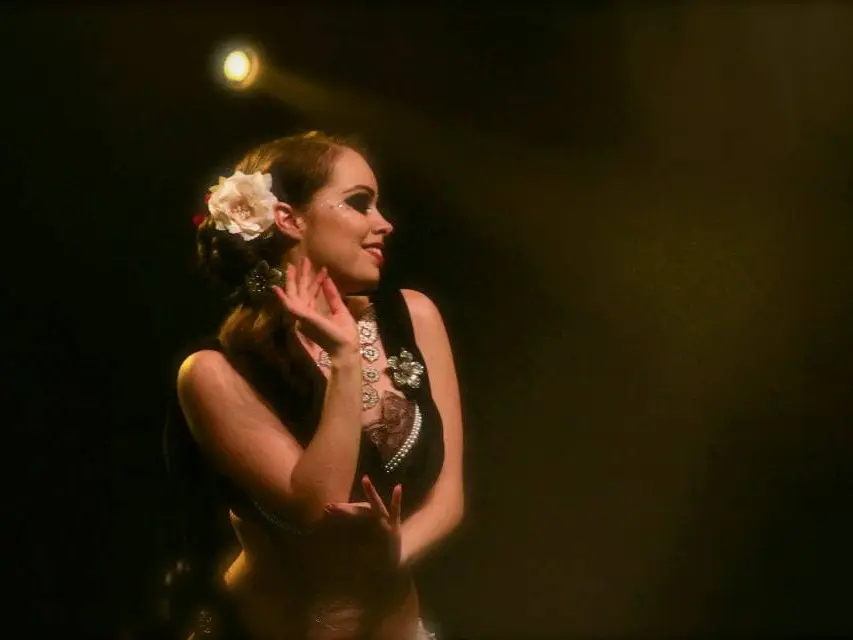Time to dance!
Bellydances, with their multicultural essence, bring us to a world where traditions blend seamlessly with modernity. It is fun, deep, and full of life! Discover the beauty of different styles of Fusion Bellydances.
"Imagine this : there was a time in history, a long time ago, where the bounce and sway of a woman’s hips was considered so beautiful that they set it to music and made a dance out of it…" Carolena Nereccio
This practice is accessible to individuals of all ages, cultural backgrounds, and fitness levels. This dance not only benefits physical health, but it also nurtures psychological well-being and social connections. It is a holistic and rewarding experience for everyone involved.
Physical Benefits:
- Cardiovascular health
- Muscle toning
- Flexibility
- Improved posture
- Coordination and focus
- Stress relief
Psychological Benefits:
- Reconnect with your body
- Boost self-confidence
- Be at peace with your sensuality
- Bring joy and fulfillment
- Strengthen creativity
Social Benefits:
- Foster social connections
- Create a supportive environment
- Learn from each other
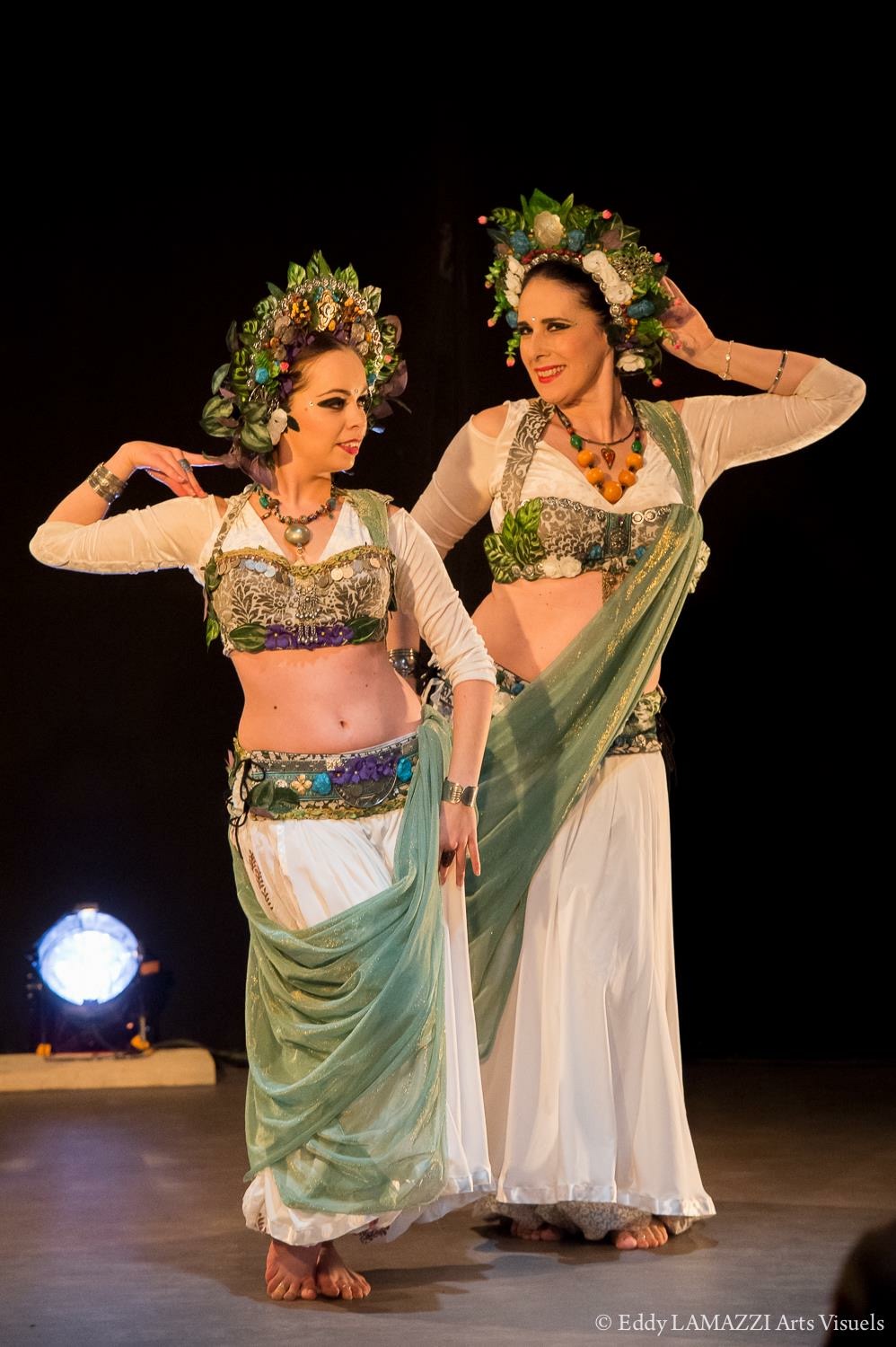
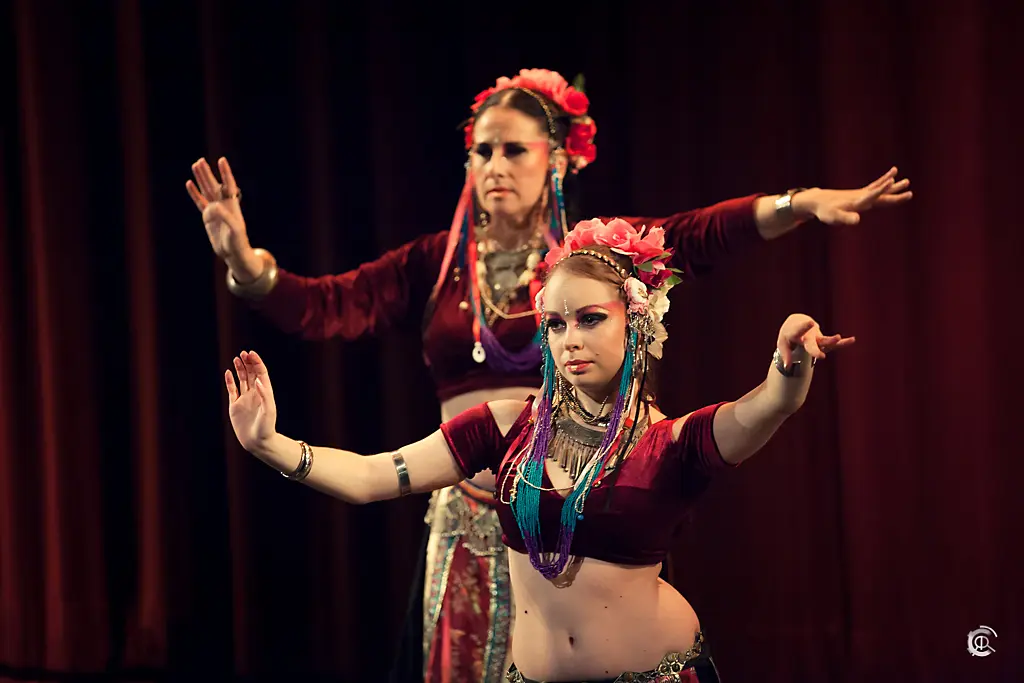
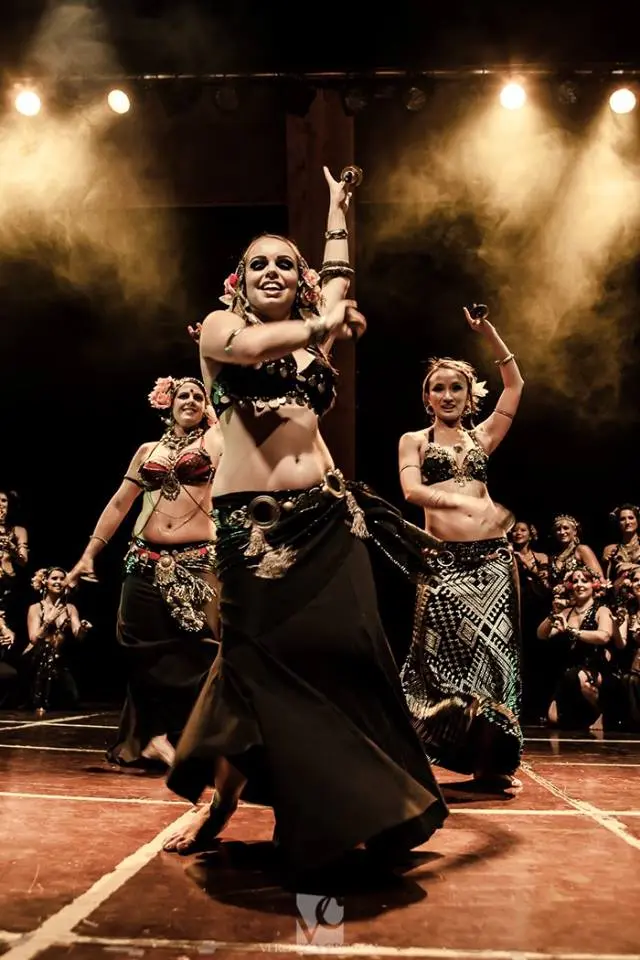
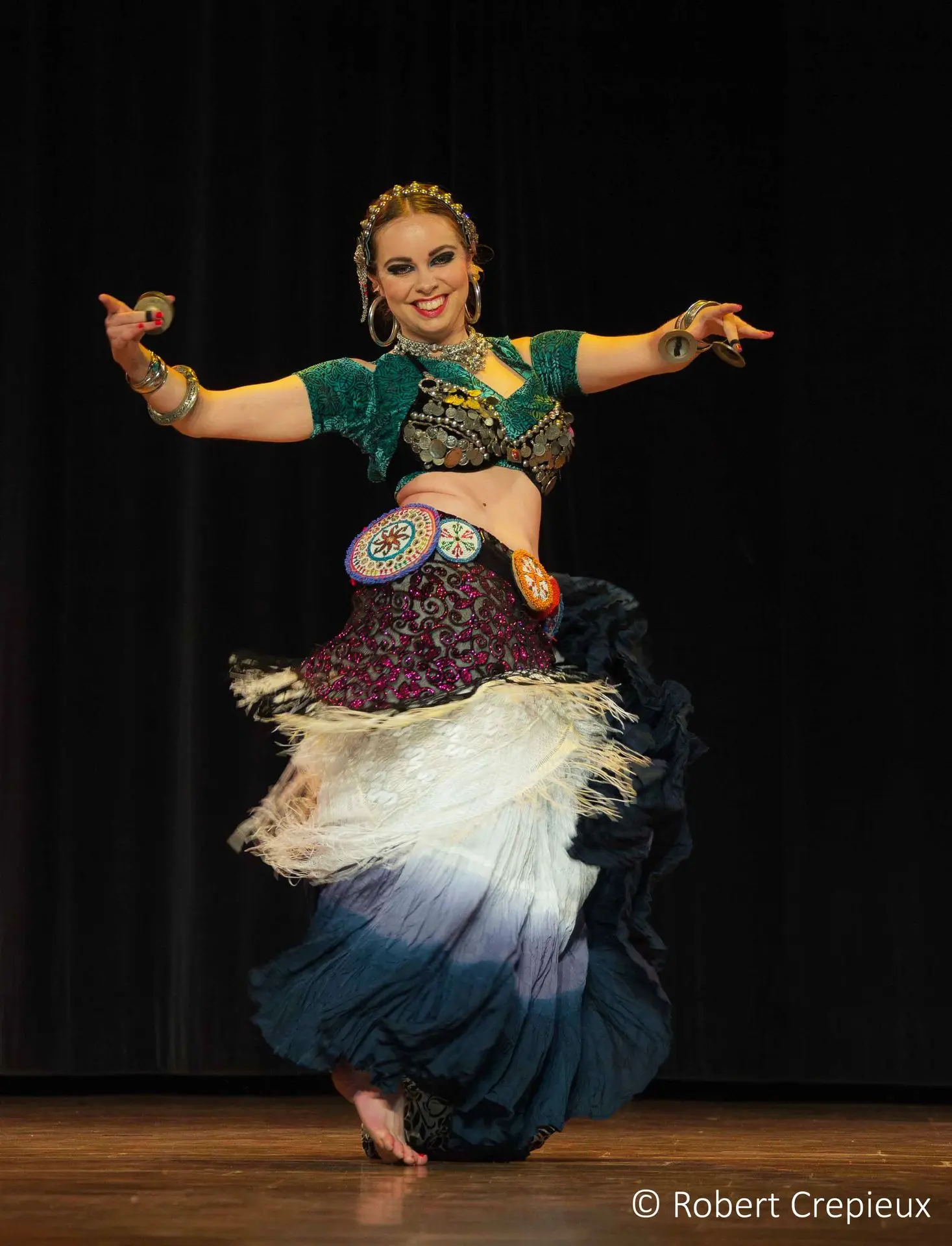
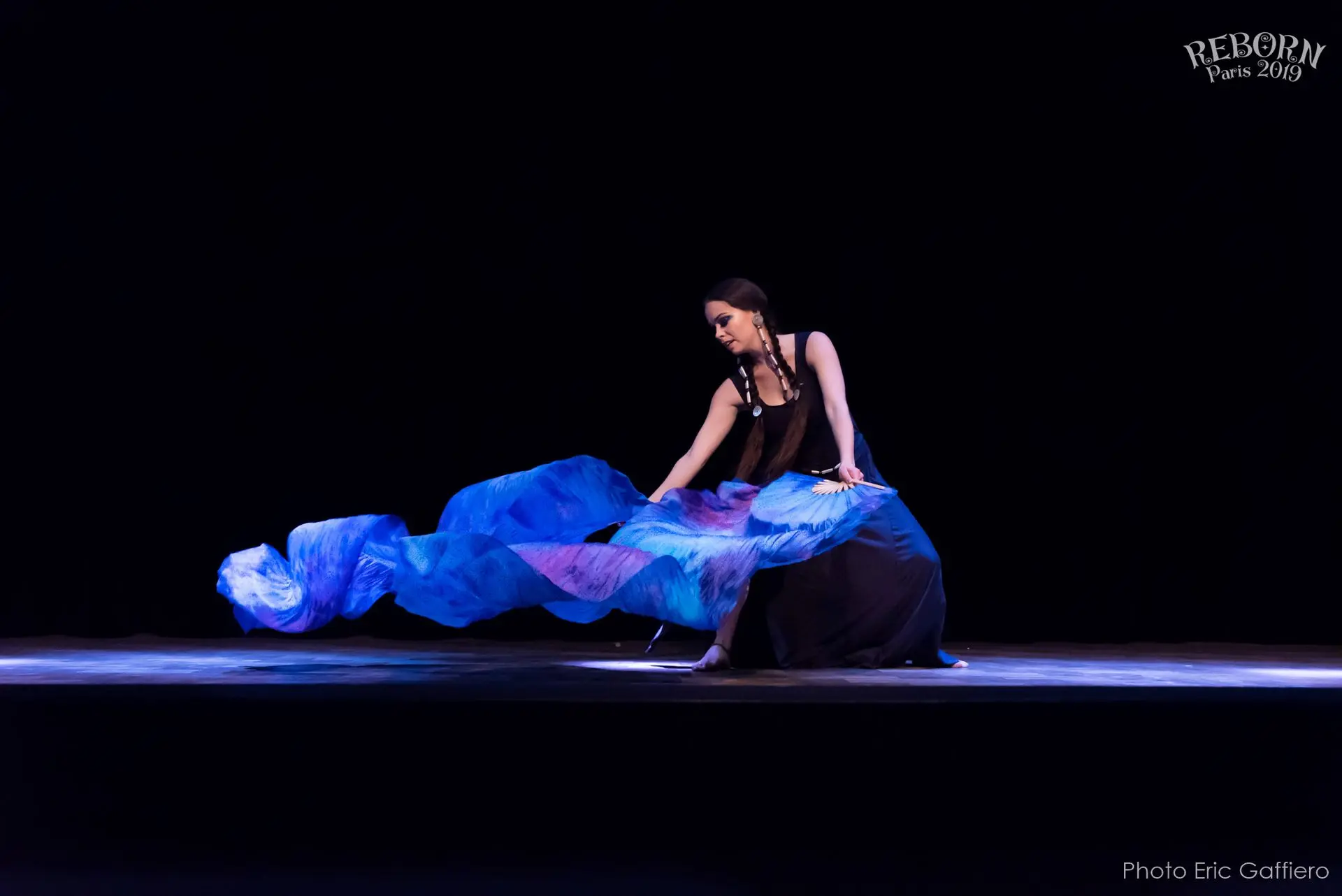
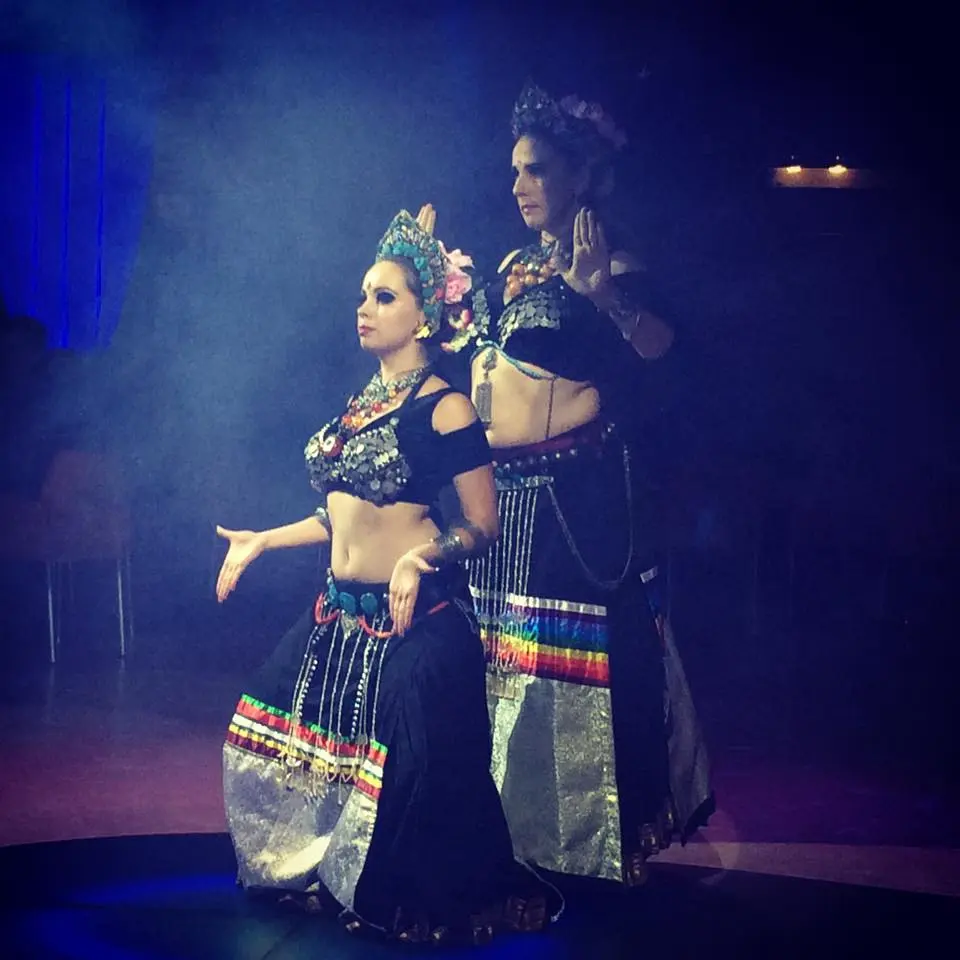
A word on Fusion Bellydance Styles I practice
American Tribal Style®
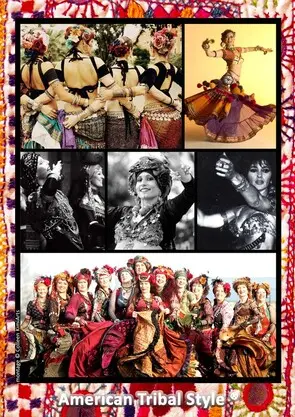
American Tribal Style® (ATS®) - now known as FatChanceBellyDance® Style - is a modern dance language built on bellydance movements associated with predominantly indian and flamenco inspirations. It is a collective improvisation dance offering the audience a feeling of attending a choreographed piece, thanks to its most precious asset: a defined vocabulary. The secret of this language shared between the dancers and the complicity that it creates, reveals its magic by offering the public a unique dance at each performance. Its beauty also lies in the universal quality of this art. Thus, anyone who knows this language can dance together regardless of their origin, nationality, or culture.
Tribal Fusion
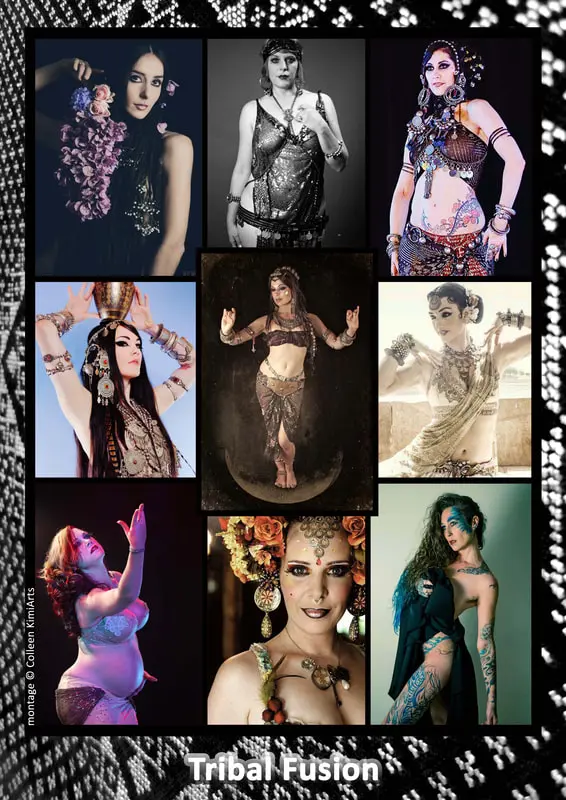
Tribal Fusion is a style of Tribal Bellydance that was born in the 2000s. It is based in particular on the aesthetics of American Tribal Style® merged with contemporary, traditional or urban dances. The main specificity of this style lies in its rich and defined technique. The dancers anchor their posture and play with the isolations and overlayers of movements, which rely on precise and intense muscular work like in hip hop dance. Tribal Fusion offers dancers and choreographers a very wide creative field with an unlimited musical and costume vision, allowing them to express their sensibility in groups or solo.
Explore your options
Join me for a collaborative experience in person and/or online. I offer wide range of services including dance performances, individual and group workshops. I cater to public and private events, with themes tailored to your preference. Let's create something extraordinary together!
Individual
Sessions
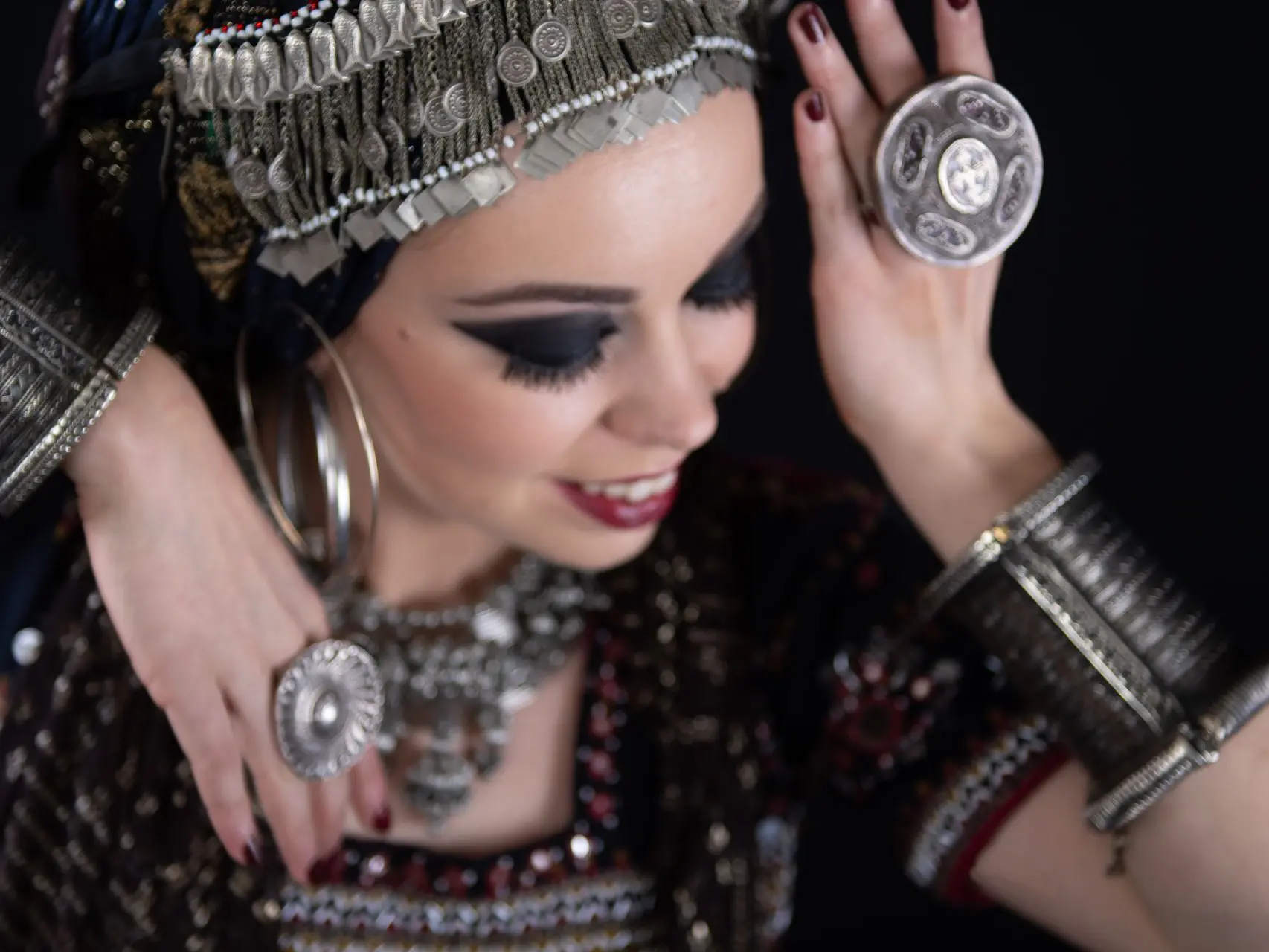
Group
Classes & Workshops

Stage Performances
& Creative collaborations
A glimpse into my dance story
I am a professional dancer specializing in American Tribal Style®, Tribal Fusion, and Modern Bellydance. My Master's degree in Dance Movement Therapy and Bachelor's degree in Psychology also support my artistic work.
I have been training for over 15 years with renowned teachers and through self-study. I performed regularly with my dear friend Manoushka in Arborescence Dance Company. Now I perform solo shows and collaborate with other artists.
I am comfortable with improvisation as well as choreographic creation. My work is based on in-depth research and introspection, leading to the expressive embodiment of the values I believe in. The care I put into costume design and makeup reflects my sensitivity to cultural harmony.
For those who love a bit of history, this following section is for you!
The beautiful story of these dances deserves to be known. It is the fruit of transmissions, innovations and assertiveness. They are stories of women who have followed their intuitions and visions. It's time to tell you some of their stories...
MULTICULTURAL AND CREATIVE ROOTS
Tribal Bellydance was shaped in the United States in the late 1960s, specifically in 1969, during the "Renaissance Pleasure Fair" Festival when Jamila Salimpour was invited to put on a show bringing together the Oriental Arts.
Jamila Salimpour is a Bellydancer, who has been teaching since 1952 and developed a unique pedagogical method of writing oriental movements. With her company Bal Anat, she integrates multiple artistic profiles, and takes the exploration of Bellydance further. For the first time, she will use the word "Tribe" to refer to the cultural mix that infuses the company.
Many dancers have identified with the energy manifested around the performances of Bal Anat. Contrary to Hollywood influences, her vision has led to a perception that bellydancers are no longer seen as objects.
A student of Jamila Salimpour, Masha is also fascinated by Bellydance. She created her own look and developed a unique approach to group dynamics. She is the one who introduces the concept of "leader and follower" within Bellydance, transmitting to each dancer a sense of unity and mutual support on stage.
Masha Archer marks the history of Tribal Dances with her unique costumes. Hair is hidden in turbans, legs are covered by voluminous sarouels, skin is adorned with mostly oriental or African jewelry, flowers adorn the outfits and bodies, flamenco or Russian shawls surround the hips, and the busts are covered by Indian cholis.
Continuing her creations, she and her troupe also begin to dance to music from different cultures of the world, offering rich performances animated by lively pieces.
A student of Masha Archer, Carolena Nericcio creates the now mythical "FatChanceBellyDance®" troupe. From the beginning, the troupe gives very regular performances in cafes and restaurants in San Francisco. In order to offer the audience unique dances, Carolena codifies the movements and takes up the principle of "leader-follower" in order to create synchronized group improvisations. By keeping oriental references clear and merging the aesthetic principles of Jamila Salimpour and Masha Archer, Carolena gives birth to American Tribal Style®. The tribe enters the stage, organizes itself in formations, a dancer leads the dance, the group honors its proposal by following it, and the wheel thus turns until the end of the performance.
Like a language, each movement can be considered a word, and improvisational structures grammatical rules. On stage, the dancers construct sentences according to their inspiration, and guide the troupe with clarity and benevolence in synchronized improvisation, before giving the leader’s place to one another.
In the 80s, the dancers also blow a rebellious wind and push their inspirations of costumes and hairstyles by drawing their influences from various cultures with the freedom of creation that makes each costume, hairstyle and makeup unique to each dancer. Their appearance is still recognizable by its codification: loose skirt, sarouel, choli, decorated bra and belt, and floral hairstyles or ornate turbans. Tattoos are on the rise. The dance has refined and spread across the globe. Women become mystical and each of their appearances suggests the feminine power and impeccable posture of modern-day goddesses.
A DANCE THAT GETS RICHER
The lineage continues its journey with students of Carolena Nericcio. Some create their own American Tribal Style® inspired troupes, such as Gypsy Caravan or Urban Gypsies..., others go solo.
Jill Parker, former FatChanceBellyDance® dancer, took the first step, becoming the first dancer of Tribal Fusion. Inspired by the movements and posture of American Tribal Style® as well as Jamila Salimpour's transmission, Jill creates her own codes and choreographies. Others will follow. A new wave of dancers is changing the style with increasingly sophisticated choreographies. Rachel Brice, Mardi Love, Sharon Kihara, Moria Chappell, to name but a few, are still nowadays iconic dancers of Tribal Fusion.
The main specificity of this style lies in its rich and defined technique as well as in a desire for choreographic challenges. The dancers anchor their posture and play with the isolations and overlayers of movements, which call for precise and intense muscular work like in hip hop dance.
In the 1990s another student of Carolena Nericcio developed a modern and urban form of Tribal Troupe Dance. Amy Sigil, driven by the rigor of her years as a basketball player, has a global and structured vision of American Tribal Style®. She then creates the Improvisation Tribal Style (ITS), by keeping the principle of "leader and follower" that allows the troupe to dance in synchronized semi-improvisation. She brings hip hop, techno, and other styles of traditional and contemporary dances, and merges it with the posture and roots of ATS® . Its very precise codification of movements, and the numerous structures allowing improvisation in all its forms, offer the possibility to dance with very large groups using popular and modern music.
Her simple and unique style of costume inspires many dancers around the world attracted by the urban and structured energy of the ITS.
The emergence of Tribal Fusion and ITS paved the way for other creations, and thus around the world, troupes emerged and began to create their own vocabulary, inspired by the classical language of the ATS®. By mutual agreement, it is established that everything that arises from the influence of the ATS® will be called "Dialecte". Like languages and their roots, ATS® gives birth to ITS and then to many other dialects that keep budding. The best example to represent the evolution of this dance is the comparison with the languages of the world: Latin, the mother tongue, gave birth to "dialectes" such as French, Italian, Spanish or Portuguese.
Through the creation of vocabulary systems and techniques for synchronized improvisation, these dances reach many women and men around the world. The community, although somewhat underground, is growing and supporting itself.
TRIBAL, A REFLECTION ON IDENTITY
Today, Tribal dancers continue to inspire and train the younger generations. It should be noted that the notion of youth does not derive from age, because one of the strong values of these dance styles is the opportunity for all to dance together regardless of their socio-cultural origin, their age, their body etc.
This community travels the world to meet at Festivals or intensive courses. Choreographic, musical and cultural inspirations no longer have limits. In keeping the roots of the ATS®, they open the doors to original fusions by borrowing a wide variety of music and an inexhaustible range of resources ranges from traditional to modern. The audience attends pieces with real contrasting universes.
This style was originally based on very traditional oriental music, to which diverse instruments were included according to the inspiration of the musicians and dancers. It now seeks musical inspiration in all genres and in return this diversity nourishes and Tribal Fusion Bellydances.
Originally, Bellydance and Tribal Bellydance were not separated. The word "Tribal" was first used in 1960 by dancers to describe an aesthetic feeling and a concept of tribes as families. But it was in the early 1990s that the term was first used to christen the new style of Bellydance that was gaining momentum: American Tribal Style®.
Having become a particularly controversial term, some creators and dancers have not hesitated to start a dialogue with the people concerned to better assess its impact, especially among Native Americans.
In 2019, Amy Sigil, is the first to positioned herself, and changes the name of Improvisational Tribal Style to Improvisational Team Synchronization. In her continuity, Carolena Nericcio also decides to no longer use the name "American Tribal Style®" and prefers to refer to her style as FatChanceBellyDance®Style or FCBD®Style.
Finally, since the term "Tribal" does not have the same connotation depending on the country and their history, it makes perfect sense to still find it in various countries to define these dance styles.
To conclude, let us repeat the words of Julie de Saint Blanquat, the first teacher of Tribal Bellydances in France "Today, we cannot speak of a unique tribal style, but more of a Spirit."
